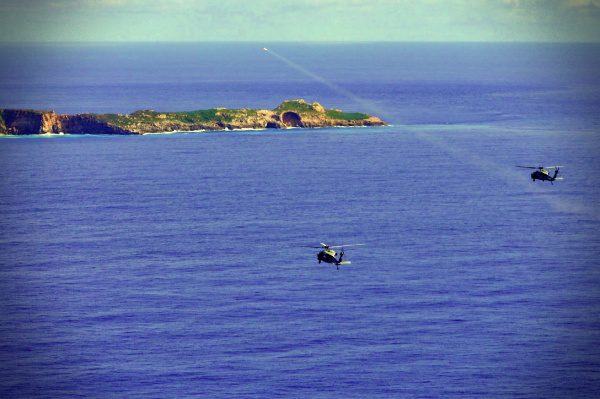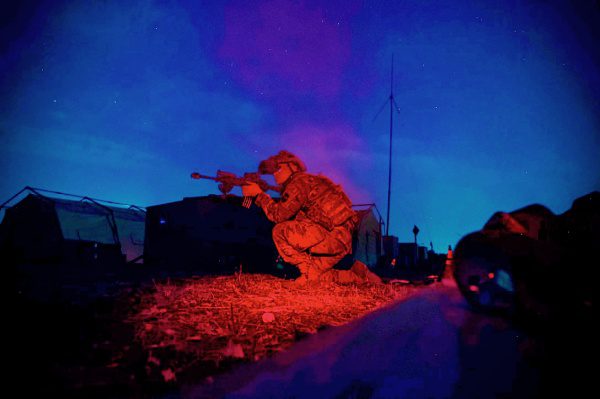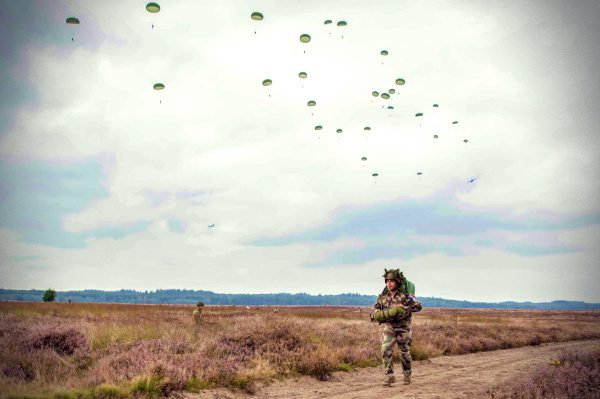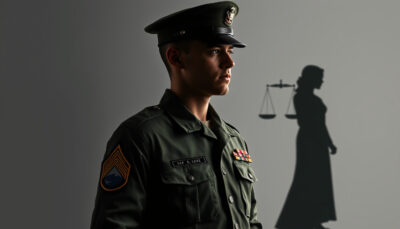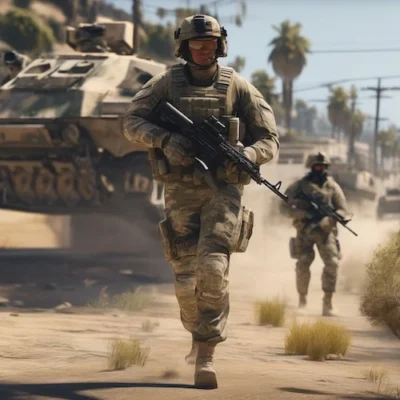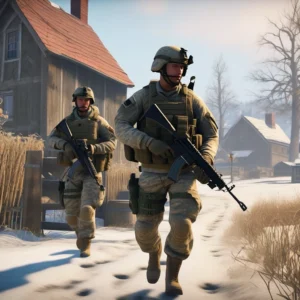Crime Scene Investigations
Military Defense Lawyers
The book begins with an introduction to unusual firearms. It then deals with forensic examinations of bullets fired, medical and legal evidence, traces of shots fired, and examination of cartridges and charges of firing. The identification of bullets, cartridge casings, serial numbers of firearms, gun residues, weapon types and models, gunshot scars and wounds, and gunpowder analyses are other relevant areas of the field.
This type of testing can be used to determine the location where a particular shot was fired. Examination of individual and class characteristics of unused bullets spent cartridges and the gun remains recovered on the scene can identify the shooter and determine the firearm’s location. It can also help classify, manufacture, calibrate, measure, and track ammunition traces, identify bullet tracks, determine who fired the gun, and establish links between the shooting and other crimes.
Ballistic fingerprints and firearm identification
Ballistic fingerprints and firearm identification are the same forensic group as tool identification: firearms are tools that leave traces or imprints on spent shells and bullets. When investigators recover a bullet from the scene, forensic investigators examine the weapon fired and compare the marks on the bullet at the crime scene with the marks on the bullet fired. Instead of analyzing ammunition found on the scene, ballistic experts say that when ballistic fingerprints are taken, the traces on ammunition are examined to determine which weapon fired the bullet.
Forensics and ballistic experts
Forensics and ballistic experts are adept at examining evidence such as bullets, gunpowder remnants, shell casings, and firearms to draw conclusive conclusions about the exact weapon used, distance, speed, and firing angle of the shooter themselves. Ballistic evidence, including bullet remnants, trajectory angle, distance from target, entry and exit marks, and damage, can be used to reconstruct events that occurred during the commission of a crime. Ballistic deals with the identification of specific markings a firearm made on a bullet, the angle and trajectory the bullet traveled after firing, and the damage it caused when it hit a surface.
Crime scene investigations and forensic ballistics
In crime scene investigations, forensic ballistics has become synonymous with the match of the seized bullets, their casings, and the firearm from which they were taken. In criminal investigations, forensic ballistic and ballistic fingerprints (also known as forensic firearms testing) help to reconstruct crime scenes with firearms. A forensic firearms investigation will seize certain pieces of evidence, including the serial number of the weapons and fingerprints left on the weapon’s surface.
Artifacts can be collected for inspection
For investigations where firearms are used as suspects, a number of artifacts can be collected for inspection, including cartridge caps, bullets, live ammunition, trace materials, and material damage to projectiles. For the forensic ballistic examination, the evidence relating to the firearm at the scene includes the effects and behavior of projectiles and explosive devices. Forensic ballistics experts can also compare bullet fragments and other evidence with the weapons of suspected suspects and others involved in the case.
Ballistic experts examine shrapnel casings, bullet fragments, clips, and firearms at the scene in a crime lab. They understand the different marks a firearm leaves on bullets after it is fired, including marks on the rifle, barrel, and other stripes on the projectile. They model the crime scene to identify the firearm and explosives used and conduct chemical analyses to determine which weapons were used.
Equipment used to examine a firearm
The equipment used to examine a firearm includes the above items, as well as specialized equipment to measure the trigger of the firearm and examine the inside of the barrel. Once the expert has completed these tasks, restore the serial number, examine the detection tools, and mark and determine the firing distance from the barrel to the target. The facility will also test the fire emanating from the firearm to recover the bullets, and cartridge casings fired.
Bullets fired at the scene can detect what type of weapon the offender has used and whether or not the firearm is linked to other crimes. A preliminary examination of bullets can rule out a large number of weapons by examining the general characteristics of the bullets seized. The examination of cartridges equipped with metal casings containing bullets, propellants, and primers can provide important information for the examination.
Investigations of markings found on bullet impacts and spherical surfaces can determine which weapon the offender used. Various pieces of evidence recovered at the scene can be used to establish this, including spent ammunition casings, bullet residues, and marks of wounds, and other gunshot wounds. This behavior is useful for law enforcement in identifying suspects who are in possession of a firearm used to fire the bullets found at the scene.
Ballistic fingerprints and the identification of firearms
Ballistic fingerprints and the identification of firearms can be exploited to produce a firearm by leaving it with interesting engravings, spent packaging, or bullets. Other firearm evidence found at the scene may include bullets and clusters of bullets, which may indicate the size of the firearm. A small selection of this information may be developed to indicate the type of firearm used and identify the actual firearm used.
Ballistics is related to the trajectory of projectiles and is associated with forensic science and firearms investigation by examining the path of a bullet as it exits the firearm and hits the target. Forensic ballistics experts examine guns and spent bullets to identify firearms or at least the type of firearm used to commit the crime. Bullets fired at the scene are being investigated in the hope of finding more clues.
Traces of gunfire
Traces of gunfire can also be found during autopsies and in the emergency room. The Firearms Settlement, also known as Ballistic Test Application, involves identifying evidence at the scene, such as cartridges fired, bullets, cartridge casings, or remains that might have been fired from a particular firearm. The ballistic expert will enter the information found on the used cartridge or bullet number into a ballistic database such as the ballistic database FBI’s or DrugFire, a computerized forensic firearm identification system.
Hiring the Top Military Defense Attorney
Is a Court Martial a Search for the Truth?
Below is a transcript from the YouTube video: Hiring the Top Military Defense Attorney – Is a Court Martial a Search for the Truth
A court Martial is not a search for the truth. If you’re going to court-martial, the prosecution will try to we’ll try to win the case at all costs. They’ll call witnesses that they think will help convict you. They’ll put on evidence that they think will help convict you. And if you are not guilty of the crime, or what the prosecution is alleging that you did misstatement or mis characterization, then you need to aggressively defend it.
The only way that the truth will come out in a court-martial is if you have an experienced attorney and take down line witnesses. A military defense lawyer is good at exposing prosecutors, cutting corners, and not showing all the evidence. An attorney who is ready, willing, and experienced enough to take your case to a military jury and fight it until the end and prove your innocence.
Resources on Ballistics And Forensic Science And Shooting Investigations:
unodc.org/e4j/en/firearms/module-8/key-issues/firearms-as-evidence.html
aboutforensics.co.uk/firearms-ballistics/
routledge.com/Forensic-Investigation-of-Unusual-Firearms-Ballistic-and-Medico-Legal-Evidence/Sinha/p/book/9780367778682
en.wikipedia.org/wiki/Forensic_firearm_examination
crime-scene-investigator.net/bullet-trajectories-at-crime-scenes.html
knoxforensics.com/shoot.php
mdcriminalattorney.net/ballistic-evidence/
mohithyadav.com/2021/01/05/importance-of-forensic-ballistics-in-criminal-investigation-part-i/
forensicsciencesimplified.org/firearms/how.html
crimemuseum.org/crime-library/forensic-investigation/ballistics/
crimesceneinvestigatoredu.org/ballistics-expert/
nist.gov/ballistics
ifflab.org/the-history-of-forensic-ballistics-ballistic-fingerprinting/
criminaljusticedegreeschools.com/careers/forensic-ballistics-expert/
forensicscienceexpert.com/2019/12/introduction-to-forensic-ballistics.html

